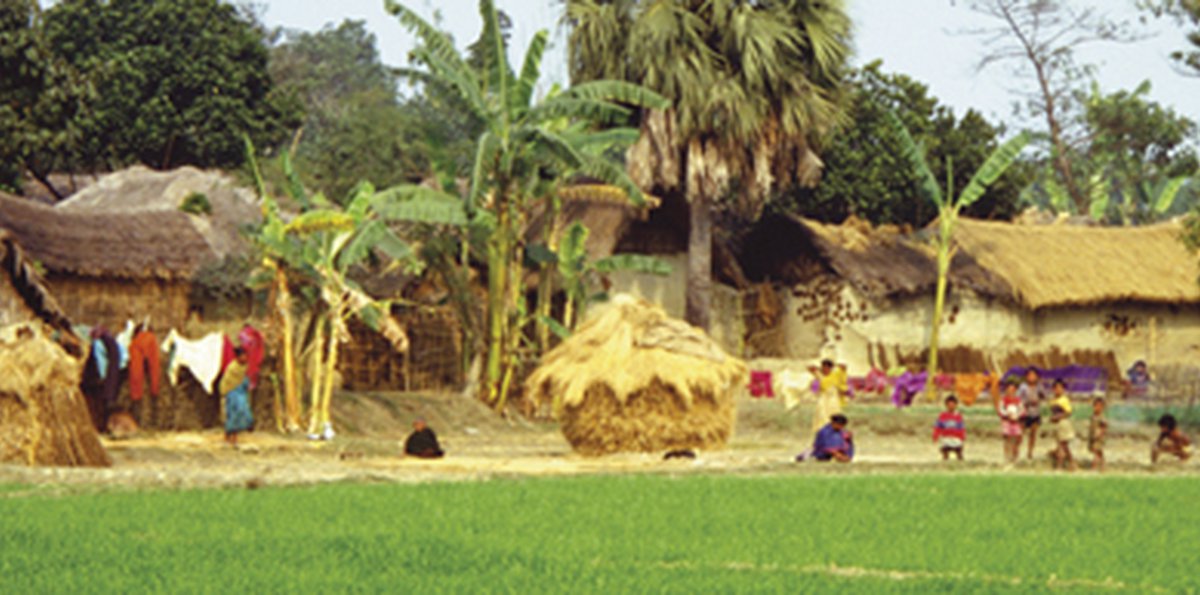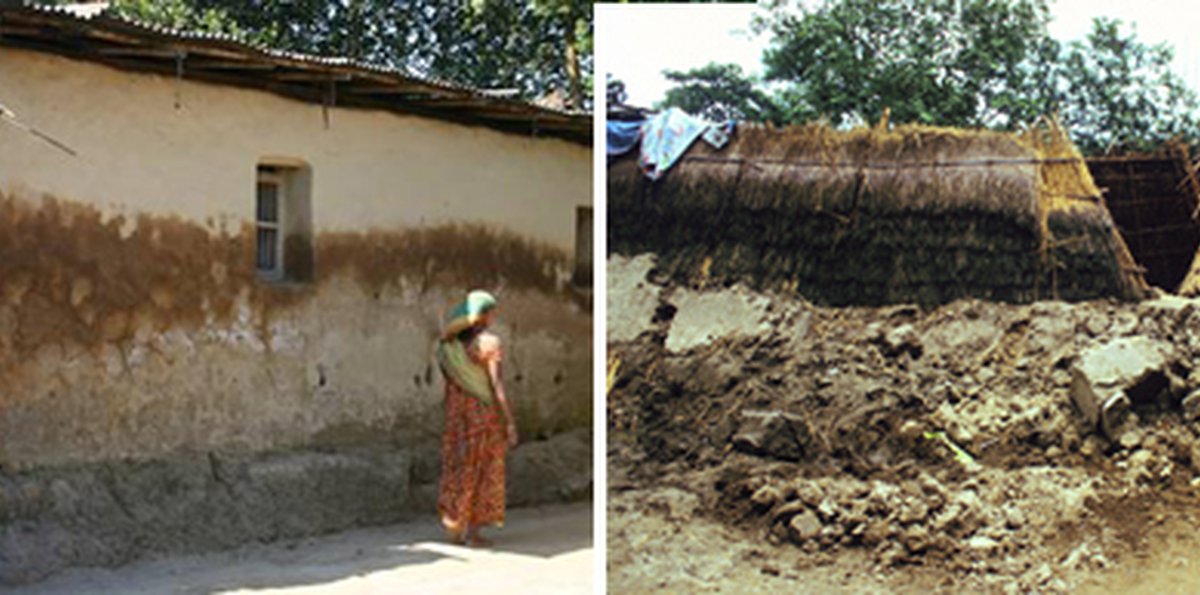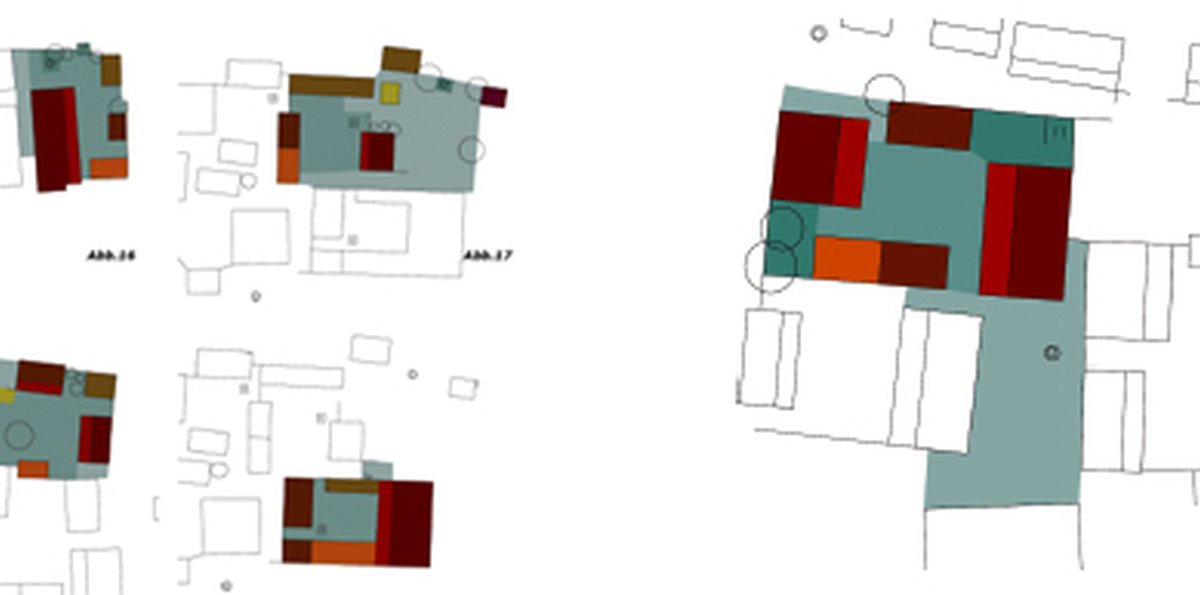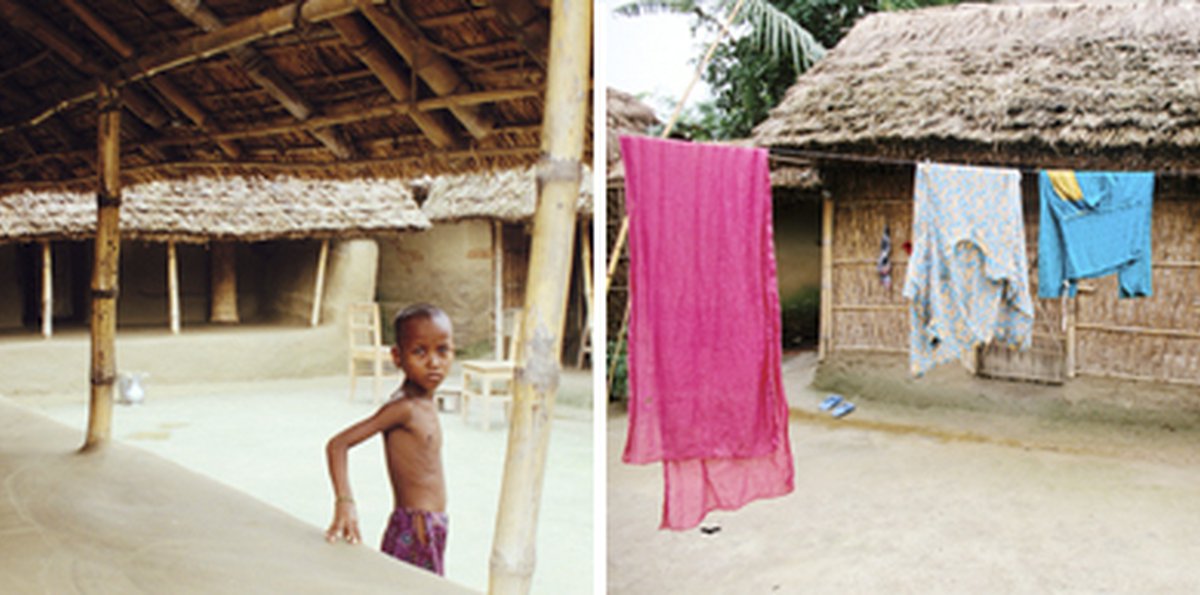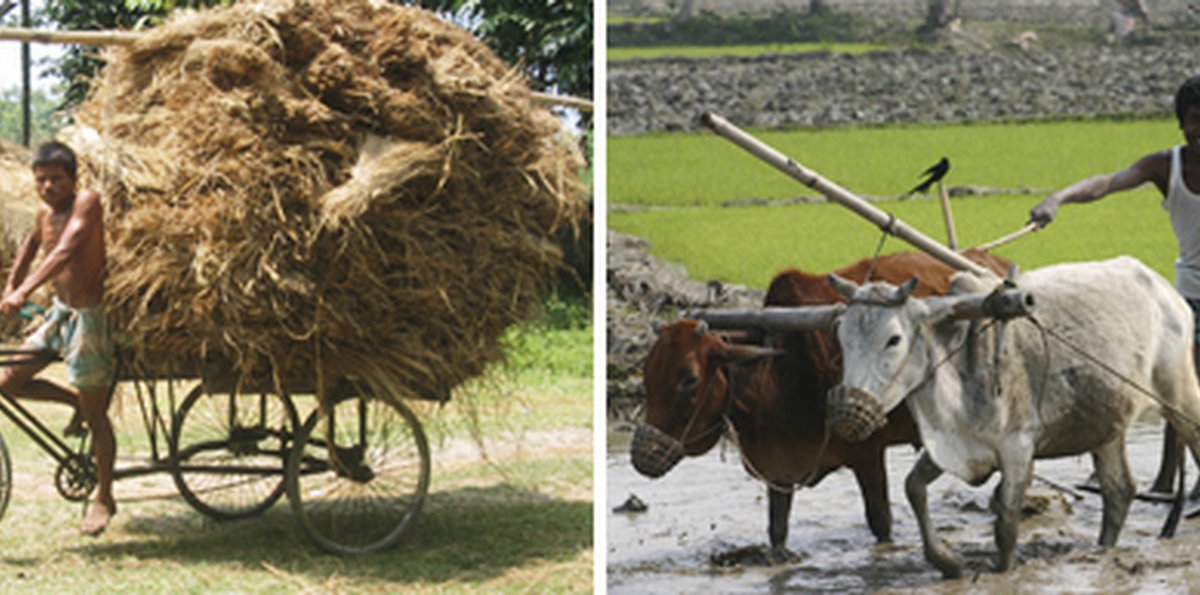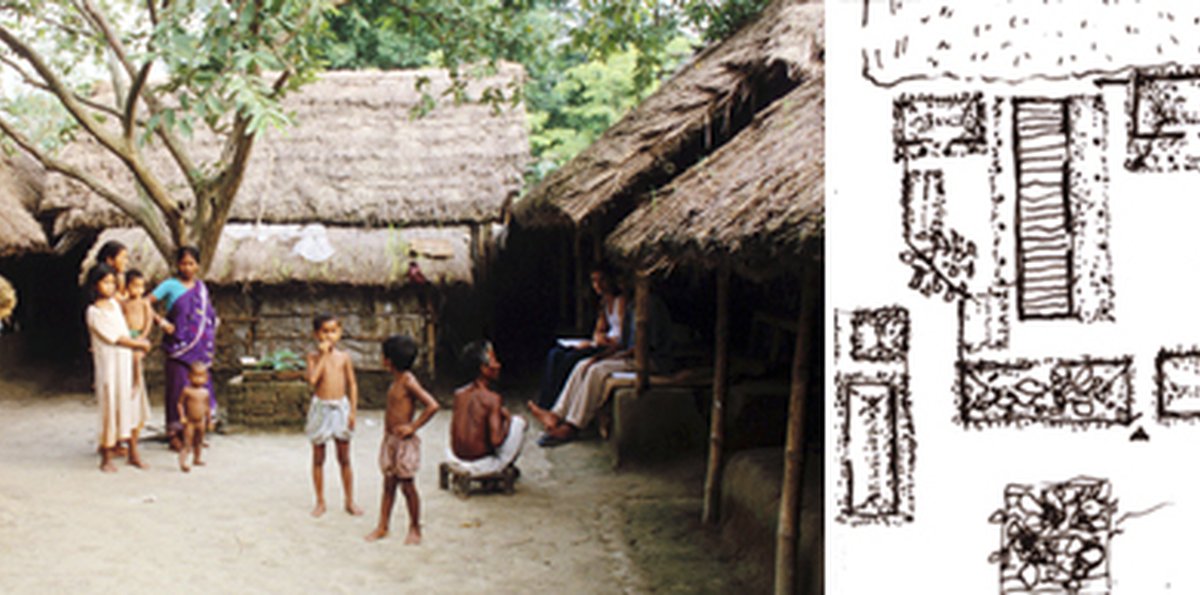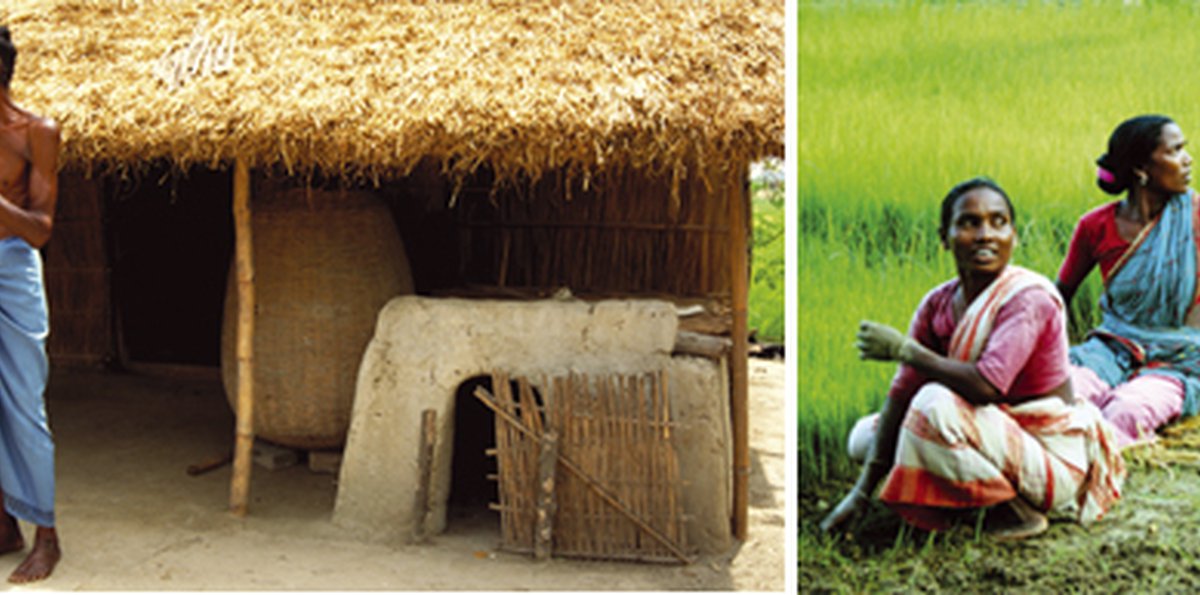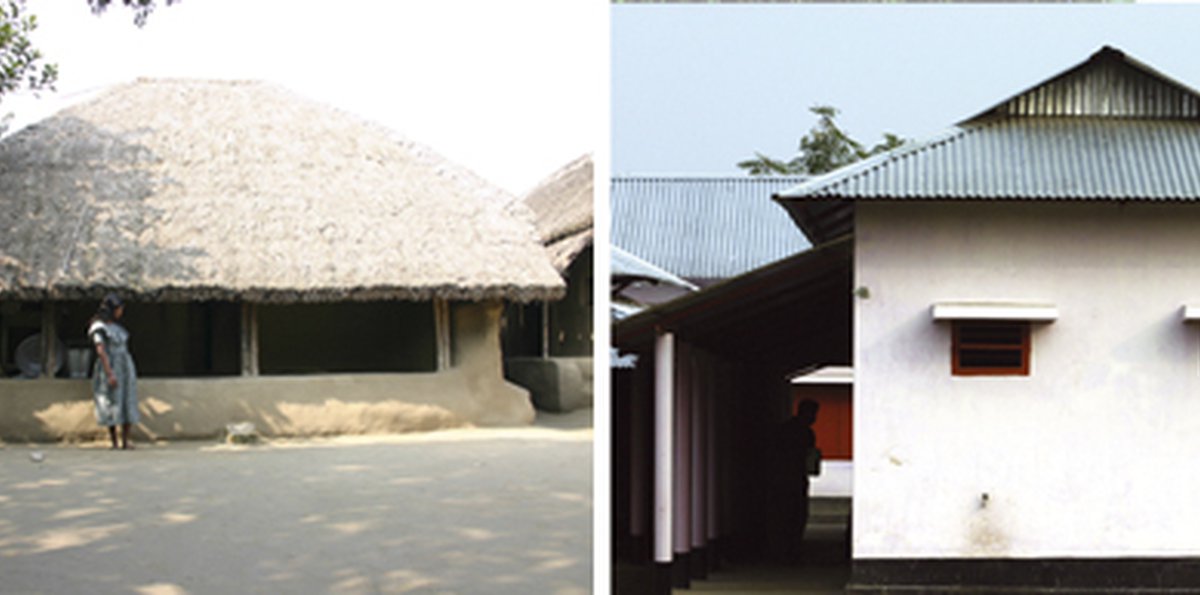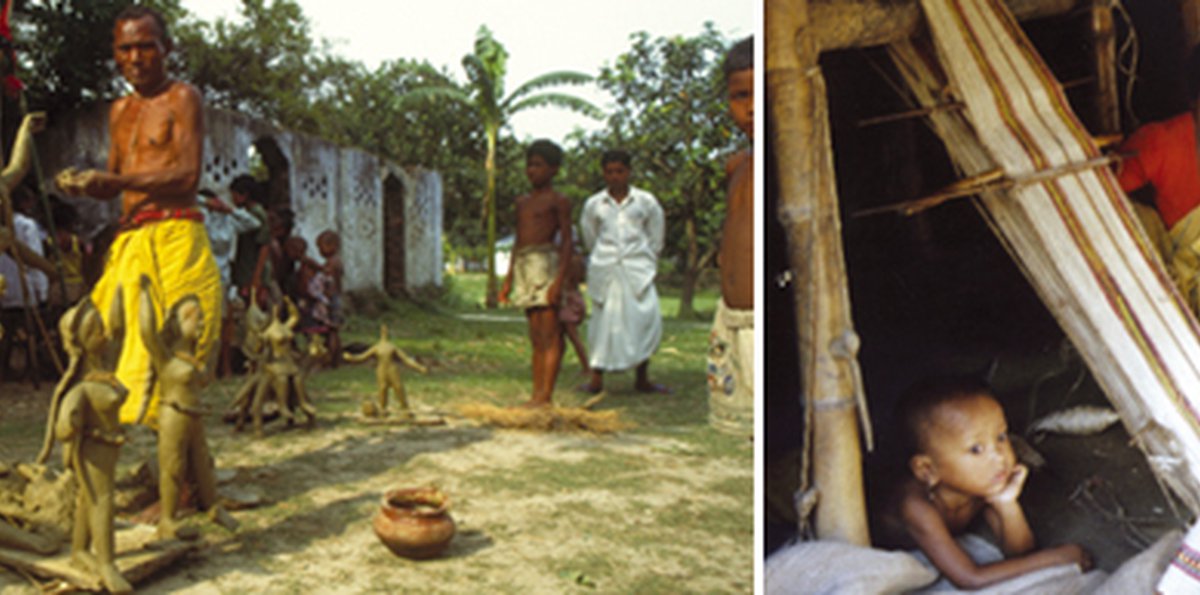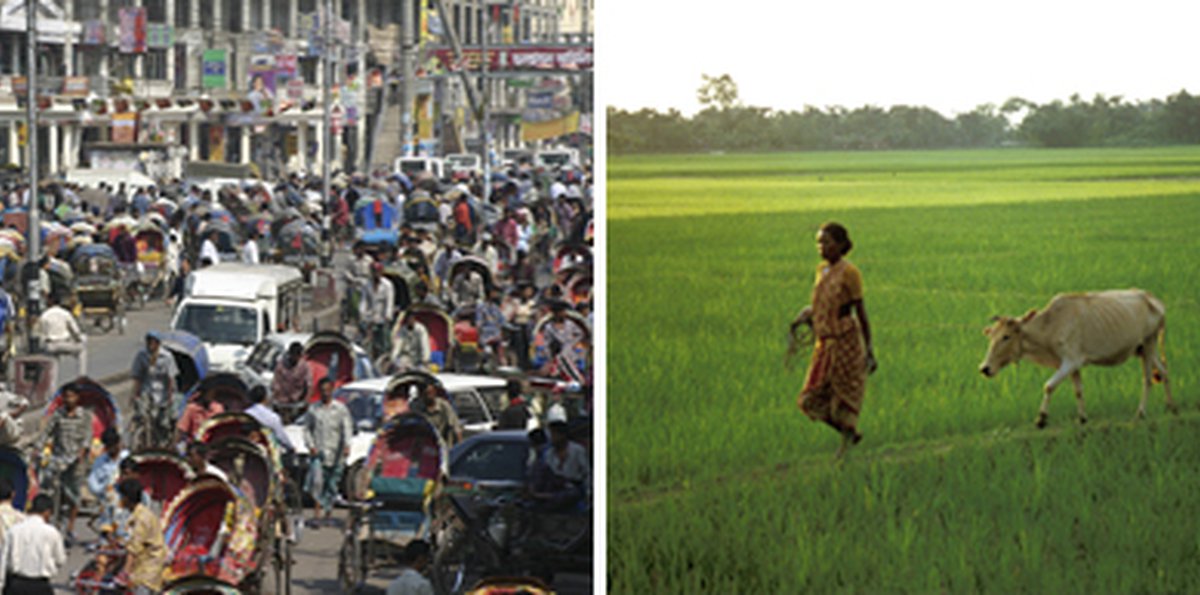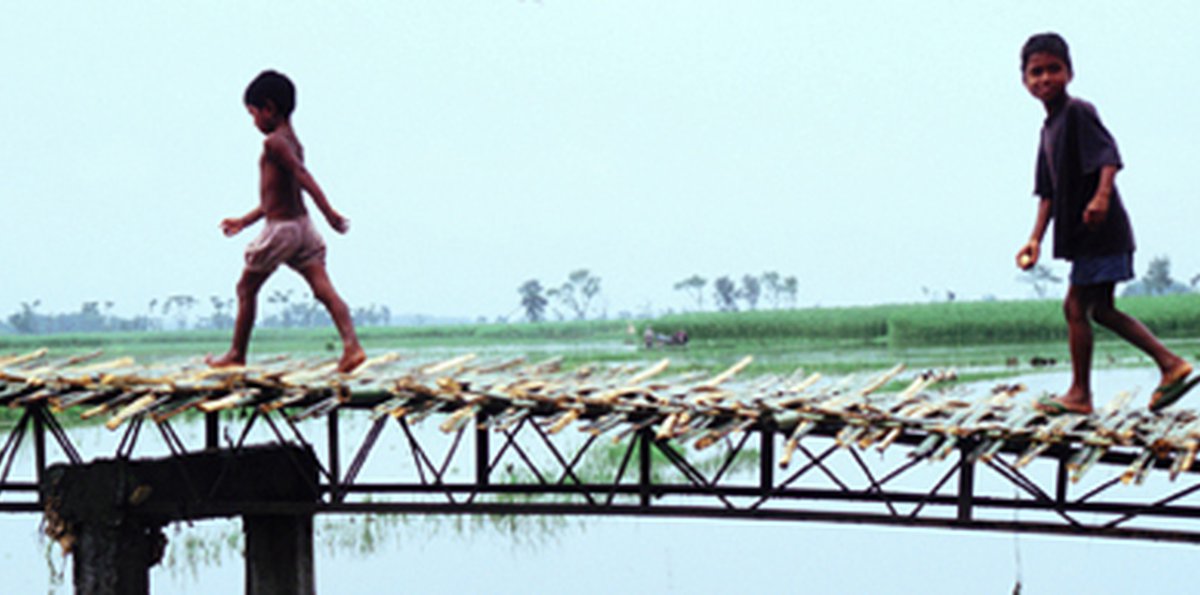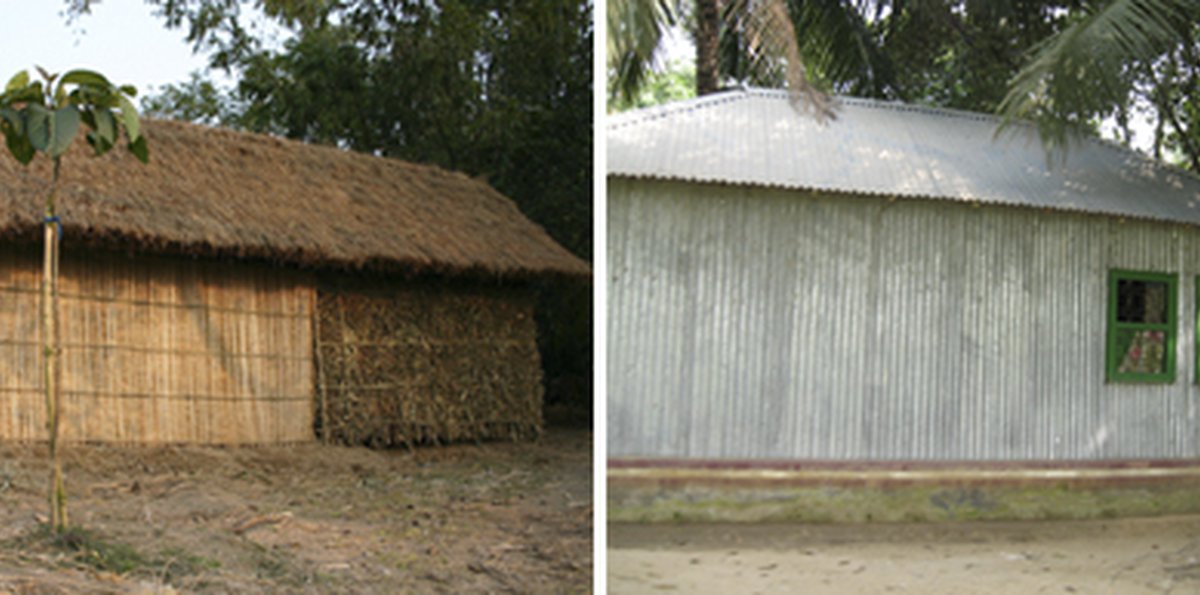Bangladesh is one of the most densely populated countries in the world with a population growth rate of 2.022% (2008 est.). Each year more and more agricultural land is lost to residential development. If Bangladeshis in the rural areas (about 110 million people) started living in two story structures, more land would be available for farming. This would also reduce the pressure on the cities like Dhaka and Chittagong where the slum population is growing day by day.
According to the survey mentioned above is reflected clearly in the choice of the building material for the private temples and shrines. They all follow the unwritten ordinance to erect religious buildings in the most valuable material that is used in the homestead. The hierarchy is clear to see while walking through a Bengali village: Brick (best), loam (middle), bamboo and straw (last).
It is vital that policy making organisations, government and non-government organisations set good examples through representative public buildings as well as through pilot projects for high quality and dense residential housing that can be multiplied by the villagers.
This text includes parts of the Phd of Anna Heringer.
Research work during the semester 2002 at the University of Art and Industrial Design Linz, Austria
Fieldwork in Bangladesh:
July - September 2001
Team:
Tobias Hagleitner, Anna Heringer, Petra Rager andGunar Wilhelm with great support of Prodip F. Tigga and Dipshikha
Supervisor:
All photos and drawings by Team Rudrapur

